-
 Bitcoin
Bitcoin $115900
-2.34% -
 Ethereum
Ethereum $3690
1.00% -
 XRP
XRP $3.109
-1.80% -
 Tether USDt
Tether USDt $1.000
-0.04% -
 BNB
BNB $771.5
0.22% -
 Solana
Solana $180.1
-3.43% -
 USDC
USDC $0.9998
0.00% -
 Dogecoin
Dogecoin $0.2293
-3.53% -
 TRON
TRON $0.3141
0.87% -
 Cardano
Cardano $0.8016
-1.19% -
 Hyperliquid
Hyperliquid $43.00
-0.08% -
 Stellar
Stellar $0.4211
-2.15% -
 Sui
Sui $3.737
0.11% -
 Chainlink
Chainlink $18.06
0.04% -
 Bitcoin Cash
Bitcoin Cash $546.9
4.97% -
 Hedera
Hedera $0.2440
0.46% -
 Avalanche
Avalanche $23.60
-0.84% -
 Litecoin
Litecoin $114.7
1.44% -
 UNUS SED LEO
UNUS SED LEO $8.975
-0.26% -
 Shiba Inu
Shiba Inu $0.00001364
-0.20% -
 Toncoin
Toncoin $3.137
-0.88% -
 Ethena USDe
Ethena USDe $1.001
-0.04% -
 Uniswap
Uniswap $10.31
1.32% -
 Polkadot
Polkadot $4.013
0.02% -
 Monero
Monero $324.6
1.07% -
 Dai
Dai $1.000
-0.01% -
 Bitget Token
Bitget Token $4.515
-1.21% -
 Pepe
Pepe $0.00001225
-2.78% -
 Aave
Aave $292.1
1.36% -
 Cronos
Cronos $0.1296
2.24%
MetAmask提示簽名風險?確定安全警告的真實性
使用MetAmask時,請務必仔細檢查簽名請求詳細信息,以避免網絡釣魚並確保為您的數字資產安全性提供安全警告的真實性。
2025/05/18 05:07
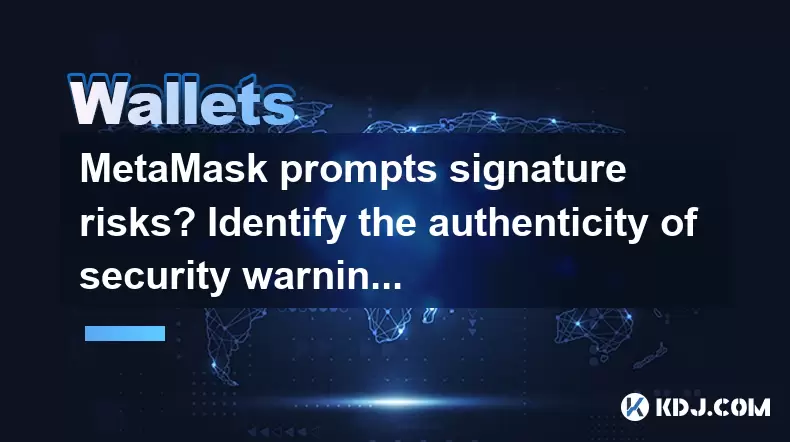
當使用MetAmask(流行的以太坊錢包)時,用戶經常遇到各種安全警告和簽名請求。了解這些警告的真實性對於維持數字資產的安全至關重要。本文深入研究了metamask簽名風險的性質以及如何識別真正的安全警告。
了解metamask簽名請求
MetAmask旨在與以太坊區塊鏈上的分散應用程序(DAPP)相互作用。連接到DAPP時,可能會提示您簽署消息或事務。這些簽名請求對於驗證您的身份和授權行動至關重要。但是,如果不小心處理,它們也會構成潛在的風險。
簽名請求通常以MetAmask接口中的彈出窗口出現。它將顯示您將要授權的行動的詳細信息,例如收件人地址,涉及的加密貨幣量和汽油費。在繼續之前,仔細審查這些細節至關重要。
確定真正的安全警告
MetAmask的真正安全警告旨在保護用戶免受潛在威脅。當您要與DAPP互動或簽署可能有風險的交易時,這些警告可能會出現。以下是真實的元掩體安全警告的一些特徵:
- 清晰簡潔的語言:真正的警告將使用直接語言來解釋潛在的風險。
- 具體詳細信息:他們將提供有關您將要採取的措施的具體詳細信息,例如合同地址或交易的性質。
- 官方MetAmask接口:警告將顯示在官方的MetAmask接口中,而不是單獨的彈出式或外部網站。
常見的簽名風險類型
使用MetAmask時,用戶可能會遇到幾種類型的簽名風險。了解這些風險可以幫助您做出明智的決定:
- 網絡釣魚攻擊:惡意演員可能會創建模仿合法的虛假DAPP或網站。當您將MetAmask錢包連接到這些站點時,可能會提示您簽署一條可能損害私鑰的消息。
- 未驗證的合同:一些DAPP可能會要求您與尚未驗證或審計的智能合約進行互動。與這些合同簽署交易可能會導致意想不到的後果。
- 高汽油費:有時,DAPP可能會要求您簽署一筆異常高的汽油費的交易。這可能是試圖耗盡您的錢包或利用網絡擁塞的嘗試。
如何驗證簽名請求的真實性
為了確保簽名請求的真實性,請遵循以下步驟:
- 檢查URL :將錢包連接到DAPP之前,請確保URL正確且安全。查找HTTPS協議並驗證域名。
- 查看交易詳細信息:仔細查看您將要簽署的交易或消息的詳細信息。確保收件人的地址,金額和汽油費為預期。
- 使用MetAmask安全功能:MetAmask包含多個安全功能,例如查看合同代碼並檢查交易歷史記錄的能力。利用這些功能來驗證請求的合法性。
- 諮詢MetAmask社區:如果您不確定簽名請求,請諮詢MetAmask社區論壇或官方支持渠道。其他用戶可能會遇到類似的請求,並可以提供有價值的見解。
處理簽名請求的最佳實踐
為了最大程度地減少與簽名請求相關的風險,請遵循以下最佳實踐:
- 始終仔細檢查:在簽署任何交易或消息之前,請仔細檢查詳細信息,以確保它們與您的意圖保持一致。
- 使用硬件錢包:考慮將硬件錢包與MetAmask結合使用,以增加安全性。硬件錢包離線存儲您的私鑰,從而降低了它們被妥協的風險。
- 保持軟件更新:確保您的MetAmask軟件和瀏覽器是最新的。更新通常包括可以保護您免受已知漏洞的安全補丁。
- 教育自己:請了解常見的騙局和網絡釣魚技術。您知道的越多,識別並避免潛在威脅的能力就越大。
認識網絡釣魚嘗試
網絡釣魚嘗試是攻擊者用來欺騙用戶簽署惡意交易的一種常見方法。這裡有一些跡象表明簽名請求可能是網絡釣魚嘗試:
- 緊迫性:網絡釣魚嘗試通常會產生緊迫感,使您迅速簽署交易。
- 不尋常的請求:如果請求要求您簽署一條消息或交易,該消息或交易似乎是不尋常的或不在上下文的,則可能是網絡釣魚嘗試。
- 可疑網址:始終檢查與您互動的DAPP的URL。網絡釣魚站點可以使用外觀相似的域名來欺騙用戶。
保護你的元箱錢包
保護您的元箱錢包不僅涉及了解簽名風險。您可以採取一些其他步驟來增強您的安全性:
- 啟用兩因素身份驗證(2FA) :如果可用,請在MetAmask帳戶上啟用2FA以添加額外的安全層。
- 使用強密碼:為您的MetAmask錢包使用強,獨特的密碼並定期更改。
- 備份種子短語:安全地將種子短語存儲在安全的位置。切勿與任何人分享或在網站上輸入。
- 監視您的交易:定期查看您的交易歷史記錄以檢測任何未經授權的活動。
常見問題
問:我可以相信MetAmask的所有簽名請求嗎?
答:不,並非所有簽名請求都是值得信賴的。始終查看請求的詳細信息,並確保其與您的意圖保持一致。如有疑問,請勿簽署請求並尋求更多信息。
問:如果我不小心簽署惡意交易,該怎麼辦?
答:如果您懷疑自己已經簽署了一項惡意交易,請立即將錢包與DAPP連接,更改密碼,並監視您的帳戶中的任何未經授權的活動。考慮與MetAmask支持接觸以尋求進一步的幫助。
問:在連接錢包之前,如何驗證DAPP的真實性?
答:要驗證DAPP的真實性,請檢查URL是否有網絡釣魚的任何跡象,對著名來源進行DAPP研究,並查找用戶評論和評分。此外,請確保DAPP在以太坊DAPP目錄等官方平台上列出。
問:是否有任何工具或擴展可以幫助我確定網絡釣魚嘗試?
答:是的,有幾種旨在幫助識別網絡釣魚嘗試的工具和瀏覽器擴展程序。例如,metAmask本身包括網絡釣魚檢測功能,而諸如Phishfort之類的擴展可以通過警告您有關已知的網站釣魚站點來提供額外的保護。
免責聲明:info@kdj.com
所提供的資訊並非交易建議。 kDJ.com對任何基於本文提供的資訊進行的投資不承擔任何責任。加密貨幣波動性較大,建議您充分研究後謹慎投資!
如果您認為本網站使用的內容侵犯了您的版權,請立即聯絡我們(info@kdj.com),我們將及時刪除。
- 虛擬每週下降:恢復分析和隱私推動
- 2025-07-26 08:50:11
- 比特幣,辛西婭·盧米斯(Cynthia Lummis)和自由金錢:紐約人
- 2025-07-26 08:30:11
- Solana,Altcoins和Coinbase:什麼是嗡嗡聲?
- 2025-07-26 06:30:12
- 2025年的XRP:公牛跑還是胸圍?
- 2025-07-26 07:30:12
- 加密立法,區塊鏈招聘和共同插入應用程序:一個新時代?
- 2025-07-26 08:30:11
- HBAR,ROBINOHAND和ALTCOINS:Crypto最新舉動的紐約分鐘
- 2025-07-26 07:10:11
相關知識
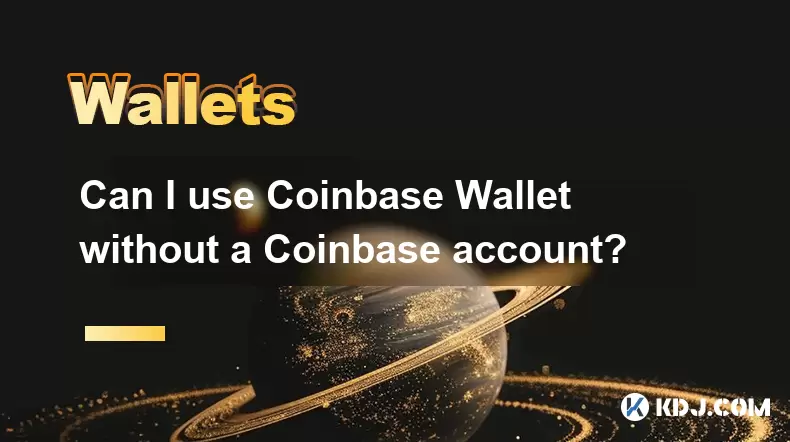
我可以使用沒有共同帳戶的Coinbase錢包嗎?
2025-07-18 04:35:36
什麼是Coinbase錢包? Coinbase Wallet是一個自我持續的錢包,允許用戶直接在其移動設備上存儲,發送和接收各種加密貨幣。與保留用戶的私鑰的Coinbase Exchange不同, Coinbase Wallet可以完全控制其私鑰和數字資產。這意味著用戶負責確保其恢復短語和管理自己的...
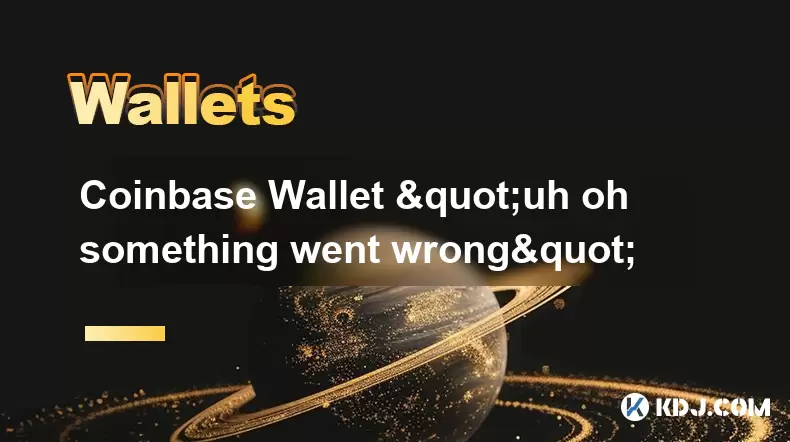
Coinbase Wallet“嗯哦,出了什麼問題”
2025-07-20 10:00:57
了解Coinbase錢包錯誤:“嗯,出了點問題”如果您是Coinbase Wallet用戶,則遇到錯誤消息“嗯,出現問題了”可能會令人沮喪,尤其是如果您處於交易中間或嘗試訪問數字資產時。此通用錯誤可能源於各種來源,包括連接性問題,軟件錯誤或與帳戶有關的問題。了解可能觸發此消息的內容以及如何有效解決它...
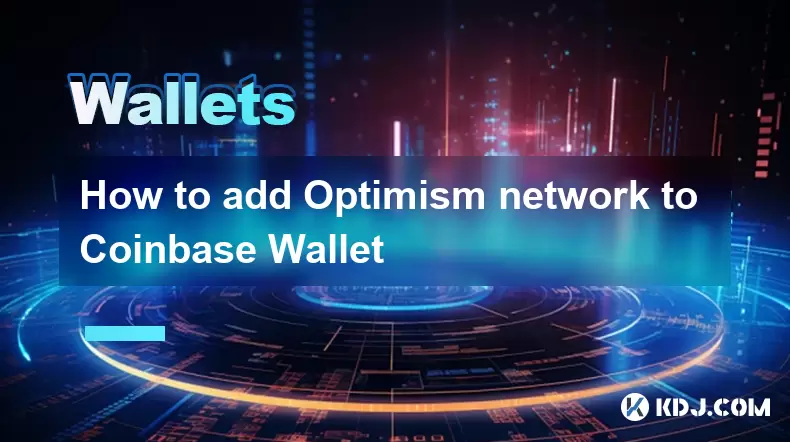
如何將樂觀網絡添加到Coinbase Wallet
2025-07-20 05:21:22
樂觀網絡是什麼?樂觀網絡是建立在以太坊區塊鏈頂部的2層縮放解決方案。它旨在通過處理主要以太坊鏈中的交易並分批安排交易來提高交易速度並降低汽油費。與分散應用程序(DAPP)或對樂觀的代幣交互的用戶受益於更快,更負擔得起的交易。將樂觀網絡添加到您的錢包中,例如Coinbase Wallet ,使您可以無...

如何在Coinbase錢包中添加仲裁
2025-07-18 15:00:22
了解仲裁及其與Coinbase錢包的整合仲裁是由OffChain Labs開發的2層縮放解決方案,可提高速度並降低以太坊交易的成本。它允許用戶執行智能合約,並與以太坊主網相比,以一小部分成本與分散應用程序(DAPP)進行交互。對於經常與以太坊項目互動的用戶,將仲裁添加到Coinbase Wallet...
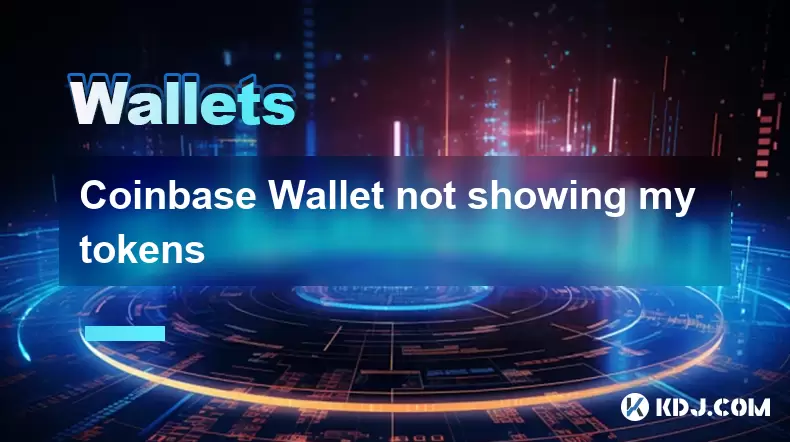
Coinbase錢包沒有顯示我的令牌
2025-07-18 09:49:52
了解Coinbase錢包代幣顯示問題如果您正在遇到Coinbase Wallet未顯示我的令牌的問題,那可能會令人沮喪,尤其是如果您有信心將令牌發送到正確的地址時。這個問題並不少見,可能源於各種技術或用戶相關的原因。了解該問題背後的潛在原因對於有效解決它至關重要。最常見的原因之一是網絡選擇不正確。許...
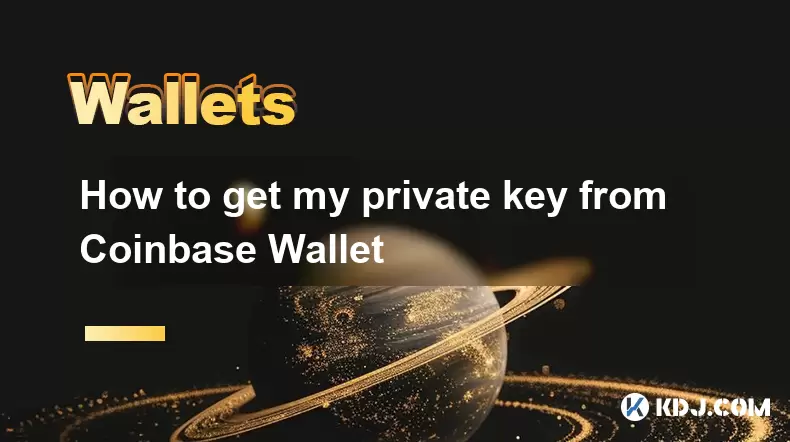
如何從Coinbase錢包中獲取我的私鑰
2025-07-24 20:01:04
什麼是私鑰,為什麼重要?在加密貨幣的世界中,私鑰是一種獨特的字母數字代碼,可允許您完全訪問數字資產。它充當數字簽名,使您可以從錢包中發送或接收資金。沒有私鑰,即使資金存儲在錢包中,您也無法證明您的加密貨幣的所有權。至關重要的是要了解失去私鑰意味著失去對您的資金的訪問權。 Coinbase Walle...

我可以使用沒有共同帳戶的Coinbase錢包嗎?
2025-07-18 04:35:36
什麼是Coinbase錢包? Coinbase Wallet是一個自我持續的錢包,允許用戶直接在其移動設備上存儲,發送和接收各種加密貨幣。與保留用戶的私鑰的Coinbase Exchange不同, Coinbase Wallet可以完全控制其私鑰和數字資產。這意味著用戶負責確保其恢復短語和管理自己的...

Coinbase Wallet“嗯哦,出了什麼問題”
2025-07-20 10:00:57
了解Coinbase錢包錯誤:“嗯,出了點問題”如果您是Coinbase Wallet用戶,則遇到錯誤消息“嗯,出現問題了”可能會令人沮喪,尤其是如果您處於交易中間或嘗試訪問數字資產時。此通用錯誤可能源於各種來源,包括連接性問題,軟件錯誤或與帳戶有關的問題。了解可能觸發此消息的內容以及如何有效解決它...

如何將樂觀網絡添加到Coinbase Wallet
2025-07-20 05:21:22
樂觀網絡是什麼?樂觀網絡是建立在以太坊區塊鏈頂部的2層縮放解決方案。它旨在通過處理主要以太坊鏈中的交易並分批安排交易來提高交易速度並降低汽油費。與分散應用程序(DAPP)或對樂觀的代幣交互的用戶受益於更快,更負擔得起的交易。將樂觀網絡添加到您的錢包中,例如Coinbase Wallet ,使您可以無...

如何在Coinbase錢包中添加仲裁
2025-07-18 15:00:22
了解仲裁及其與Coinbase錢包的整合仲裁是由OffChain Labs開發的2層縮放解決方案,可提高速度並降低以太坊交易的成本。它允許用戶執行智能合約,並與以太坊主網相比,以一小部分成本與分散應用程序(DAPP)進行交互。對於經常與以太坊項目互動的用戶,將仲裁添加到Coinbase Wallet...

Coinbase錢包沒有顯示我的令牌
2025-07-18 09:49:52
了解Coinbase錢包代幣顯示問題如果您正在遇到Coinbase Wallet未顯示我的令牌的問題,那可能會令人沮喪,尤其是如果您有信心將令牌發送到正確的地址時。這個問題並不少見,可能源於各種技術或用戶相關的原因。了解該問題背後的潛在原因對於有效解決它至關重要。最常見的原因之一是網絡選擇不正確。許...

如何從Coinbase錢包中獲取我的私鑰
2025-07-24 20:01:04
什麼是私鑰,為什麼重要?在加密貨幣的世界中,私鑰是一種獨特的字母數字代碼,可允許您完全訪問數字資產。它充當數字簽名,使您可以從錢包中發送或接收資金。沒有私鑰,即使資金存儲在錢包中,您也無法證明您的加密貨幣的所有權。至關重要的是要了解失去私鑰意味著失去對您的資金的訪問權。 Coinbase Walle...
看所有文章

























































































